It’s summer time once again and we clamor for things to do! Tulay highlights some museums that are slightly off the beaten path. Should you find yourself in their neighborhoods, do drop in.
Metro Manila

BANTAYOG NG MGA BAYANI
Sen. Jovito R. Salonga Building, Bantayog Memorial Center
Quezon Avenue near corner EDSA, Diliman, Quezon City
938-7981 | 938-6672 | [email protected] | http://www.bantayog.org
Museum hours: Mondays to Fridays, 10 a.m. to 4 p.m.
“Disappeared” was newly defined in the 20th century to describe those who were kidnapped and killed by the military for being considered threats to the State. The South American countries even had a name for them: desaparecidos. The Philippines had its own dark era of systematic enforced disappearances during the martial law years (1972-1981), mirroring the history of the desaparecidos in South American dictatorships. The Bantayog ng mga Bayani (Shrine of Heroes) Memorial Center honors the memory of our own “disappeared.” The museum displays memorabilia of the resistance movement during the military rule of Ferdinand Marcos. The center has several buildings, a Wall of Remembrance where martyrs’ names are etched, an amphitheater, auditorium, multipurpose rooms and a reflexology garden. It is a popular venue for human rights advocacy.
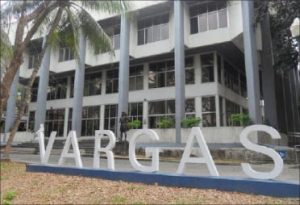
JORGE B. VARGAS MUSEUM AND FILIPINIANA RESEARCH CENTER
Roxas Avenue, University of the Philippines Campus, Diliman, Quezon City
928-1927 | [email protected] | https://vargasmuseum.wordpress.com/
Museum hours: Tuesdays to Saturdays, 9 a.m. to 5 p.m.
A center for Philippine art and culture, the Jorge B. Vargas Museum and Filipiniana Research Center’s main thrusts are research, exhibition and education. It enjoys the distinction of being one of the art repositories in the country embracing the entire range of Philippine artistic creativity from the 1880s to the 1960s. Through its collection of oil paintings, watercolors, pastels, drawings, and sculptures, Vargas Museum aims to contribute towards the appreciation of the country’s artistic heritage and to foster an awareness of the history of Philippine art. The building, formally inaugurated in 1987, was designed with multi-level architecture to support the museum’s diverse functions. It has a bookshop and space for community arts program and a café for visitors. Certain areas like the lobby and the west wing are reserved for changing exhibitions. There is always something new and thoughtful in these sections. Vargas’ permanent collection is housed in its main gallery. On top of visiting the museum itself, take the opportunity to roam around the university campus. Fresh air is so rare in Metro Manila, but this is where pedestrians rule supreme, hence less smog from public transport. Bring a picnic basket and find any open spot to lay out your blanket.
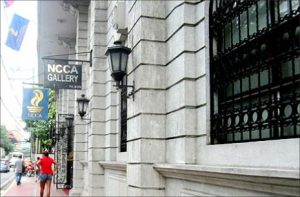
NCCA GALLERY
633 General Luna Street, Intramuros, Manila
527-2192 local 328 | [email protected] | http://ncca.gov.ph
Museum hours: Mondays to Thursdays, 7 a.m. to 5 p.m.
At the heart of its base of operations in Intramuros, the National Commission for Culture and Arts has re-opened the exhibition space at the lobby of the NCCA Building in response to demands of a burgeoning contemporary art scene in the Philippines. Creation of the NCCA Gallery dedicated to contemporary arts was a joint initiative by the Committees on Visual Arts and on Art Galleries. Through the establishment of the gallery, both committees envision to help young artists get their much-needed exposure without hampering their zest to explore new tendencies on the edge of current art making. The new gallery is outfitted to accommodate video works and movable panels for installation pieces.
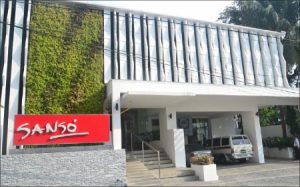 FUNDACION SANSO MUSEUM
FUNDACION SANSO MUSEUM
32 V. Cruz Street, Sta. Lucia, San Juan City, Metro Manila
952-1568 | [email protected] | http://www.juvenalsanso.com
Museum hours: Mondays to Sundays, 10 a.m. to 5 p.m.
Fundacion Sansó Museum houses the artworks and archives of internationally renowned artist Juvenal Sansó, whose art career spans over 65 years. Sansó, who grew up in Manila, has been awarded in three countries for his contributions to art. He received the Cross of Isabella from the King of Spain, the Order of Chevalier medal from the government of France, and the Presidential Medal of Merit from his beloved Philippines. Sansó mastered a variety of media – oils, watercolors, printmaking, sculpture and even textile design – and the art currently on display shows a curatorial restraint which allows his works to speak to the careful viewer. His works have been collected by prestigious museums around the world such as the Musee d Art Moderne, Paris; Museo de Arte Contemporaneo, Madrid; the Smithsonian Institution, Washington; the Metropolitan Museum, New York; Museum of Modern Art, New York; Chicago Art Institute; San Francisco Museum. In the Philippines, Sansó’s works are in the National Museum, Ateneo Art Gallery, the Lopez Museum and the Cultural Center of the Philippines, and in private collections. It is quite a treat when Sansó himself is in the museum when you visit. He chats with visitors; but just being in the presence of this icon in art is already a huge treat!
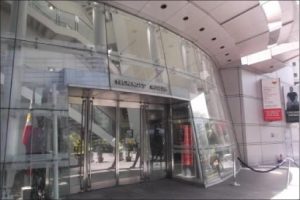 YUCHENGCO MUSEUM
YUCHENGCO MUSEUM
RCBC Plaza corner Ayala and Sen. Gil J. Puyat Avenues, Makati City
889-1234 | [email protected] | www.yuchengcomuseum.org
Museum hours: Mondays to Saturdays, 10 a.m. to 6 p.m.
The Yuchengco Museum opened its doors to the public in September 2005. Its primary goal is to foster a greater public appreciation of art through the finest international as well as local, cultural, historical and design exhibits and programs. The Museum is not only a “temple” that showcases art, but also a “forum” of exchange, debate and education. The Museum was created to house the art collection of the late Ambassador Alfonso T. Yuchengco, and highlight his distinguished career as a businessman, diplomat, collector, philanthropist, patron of the arts, and advocate for education in the Philippines and beyond.
 MUSEUM OF CONTEMPORARY ART AND DESIGN (MCAD)
MUSEUM OF CONTEMPORARY ART AND DESIGN (MCAD)
Ground Floor, School of Design and Arts Campus, 950 P. Ocampo Street, Manila
230-5100 | http://www.mcadmanila.org.ph
Museum hours: Sundays, 10 a.m. to 2 p.m.; Tuesdays to Saturdays, 10 a.m. to 6 p.m.
As part of the artistic community of the College of Saint Benilde’s School of Design and Arts, the Museum of Contemporary Art and Design (MCAD) is a unique institution that offers the experience of and exposure to contemporary art and its various publics, with a focus on Manila, Philippines as context. Distinct for its position as a non-collecting institution, MCAD’s contemporary art exhibitions, public programs, as well as other cultural and art-inspired undertakings showcase the possibilities of technology, new media and presents content that encourages engagement with art and culture, its practice and production, as well as its presentation and interpretation. Professionally recognized for its standards in curatorial and exhibition practice, MCAD is a space where art is central. By remaining reflexive and responsive to changes in society, politics and ideas, the Museum seeks to develop an innovative and inclusionary paradigm where “free access for all” addresses not only a cross section of social classes, but also of knowledge. Visiting MCAD is always a fresh experience. There is always something new. It is best to call or email them before visiting as they may be closed to set up a new exhibition.
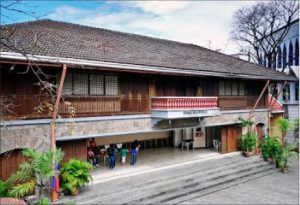 VALENZUELA CITY MUSEUM
VALENZUELA CITY MUSEUM
MacArthur Highway, Valenzuela City
352-1000 | www.valenzuela.gov.ph
Museum hours: Mondays to Fridays, 8 a.m. to 5 p.m.
The 300-square meter local museum is a project of the Cultural Affairs and Tourism Development Office, constructed at the Legislative Building in Valenzuela City Government Complex. Each museum section is identified by historical era, featuring unique stories that demonstrate Valenzuelanos’ sense of dignity and pride. The museum is subdivided according to the periods of Philippine history – Spanish, American, Japanese periods, post-war era, ending with the contemporary view of Valenzuela City. Its entrance features tektites and obsidian stones discovered by Henry Otley Beyer, father of Philippine Anthropology, in the village of Pugad Baboy (now Barangay Gen. T. De Leon). This section displays flake tools showing Valenzuela as an early settlement. The Spanish period section recounts stories of the existence of Pueblo de Polo, the festivity of San Roque, and the three local patriots during Luzon’s revolt against Spain – Dr. Pio Valenzuela, Capt. Delfin Velilla and Gen. Tiburcio “Tibo” de Leon. A replica of an Arkong Bato is the entryway to the museum’s American and Japanese period sections. Arkong Bato is a notable stone arc built by the Americans in 1910, originally as a boundary between Rizal and Bulacan provinces. The last portion, aptly named “Vibrant City,” plays a continuous audio visual presentation about Valenzuela City’s programs and projects. Different Valenzuelanos who had brought honor to the city in different fields are featured in a digital wall of fame.
